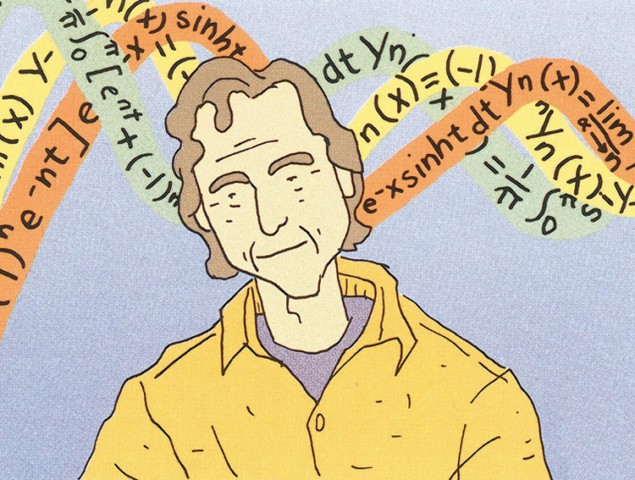On Richard Feynman, quantum mechanics and inflight science

Feynman the cartoon
Given Richard Feynman’s larger-than-life popular image, it was probably only a matter of time before someone literally turned him into a cartoon character. That, at least, would be the cynic’s view of Jim Ottaviani and Leland Myrick’s book Feynman, in which the writer-and-artist pair present the life and work of the late Nobel laureate in graphic-novel form. Unsurprisingly, perhaps, their account places heavy emphasis on Feynman’s bongo-playing, skirt-chasing side, and readers who feel that such anecdotes distract from Feynman the physicist (see above review) should steer well clear. Yet it is hard to be cynical for long about a book that, like its title character, simply bubbles with the pleasure of doing physics. The illustrations are crisp and memorable, and the pithy text captures Feynman’s inimical voice even when Ottaviani is not quoting him directly. Many of the anecdotes are, it is true, pretty well worn; the one about Feynman as Los Alamos safe-cracker, in particular, is as threadbare as an ancient stuffed bear with one ear missing. Those who prefer such anecdotes undiluted might be better off with Feynman’s own memoirs Surely You’re Joking, Mr Feynman! and What Do You Care What Other People Think?. However, there are some lesser-known stories here as well, drawn from the authors’ metre-high pile of published and unpublished Feynmanalia. Of particular interest is the recurring thread about Feynman’s sister Joan, who became a noted astrophysicist despite repeated discouragement from nearly everyone. After their mother tells Joan that women’s brains are “physiologically incapable of doing science”, Richard quietly slips her his astronomy textbook, urging her to “keep working through until you can understand the whole book”. The pair later make a pact: he can study anything he likes, as long as he leaves the Northern Lights to her. This Feynman may be a cartoon, but he has a heart as well as a brain.
- 2011 First Second Books £18.99/$29.99hb 272pp
Explaining the unseen
Some popular-science books use pretty pictures or amusing anecdotes to get people interested in science. Others take readers’ interest as a given and concentrate instead on providing this (usually smaller) audience with the clearest, most rigorous explanations possible. In 101 Quantum Questions: What You Need to Know About the World You Can’t See, author Kenneth W Ford has opted decisively for the second option, trusting that readers will follow him as the book proceeds from simple questions such as “How big is an atom?” (no. 4) to complex ones like “What is entanglement?” (no. 95). Fortunately, Ford – a nuclear physicist and former director of the American Institute of Physics – is an accomplished teacher, and what his book lacks in gee-whizzery it makes up for in explanatory power. One reason for this is the author’s flair for analogies. In one early answer, he describes the changeable shape of an atomic nucleus by comparing it to “a balloon inside which a gerbil is running round and round”, noting that the balloon will distort to give the gerbil more room to run. Despite these advantages, however, the book is not a quick read, and casual readers will probably prefer to leave plenty of time to ponder each question before moving on to the next. Alternatively, Quantum Questions would make a good introduction for physics students who will find Ford’s book a useful beginners’ guide.
- 2011 Harvard University Press £18.95/$24.95hb 304pp
Plane thoughts for a long flight
We’ve had the science of Santa, sport and superheroes. Surely there cannot be another new twist to this particular genre, whereby hard science is made digestible by showing its relevance to some facet of modern life? Step forward veteran UK science writer Brian Clegg with Inflight Science: a Guide to the World From Your Airplane Window. Aimed squarely at passengers looking for something to read on a long flight, Clegg describes relevant bits of science from the security checks at an airport, via take-off and cruising, to touch-down at your final destination. It is a clever tactic because it allows Clegg to touch on a wide range of otherwise disparate subjects, from X-ray scanning to how the flat-screen TV in the back of your headrest works. Ironically, those screens are the enemy of all in-flight reading and their temptations proved a constant distraction for your Physics World reviewer, who read the book on a long-haul flight to Beijing. Another drawback is that the level of scientific explanation is fairly low, which means that physicists will feel a little short-changed and perhaps even cringe at some of the over-simplifications. But, hey, if you thought you could have done better, unfortunately Clegg had the idea first.
- 2011 Icon Books £12.99pb 212pp



